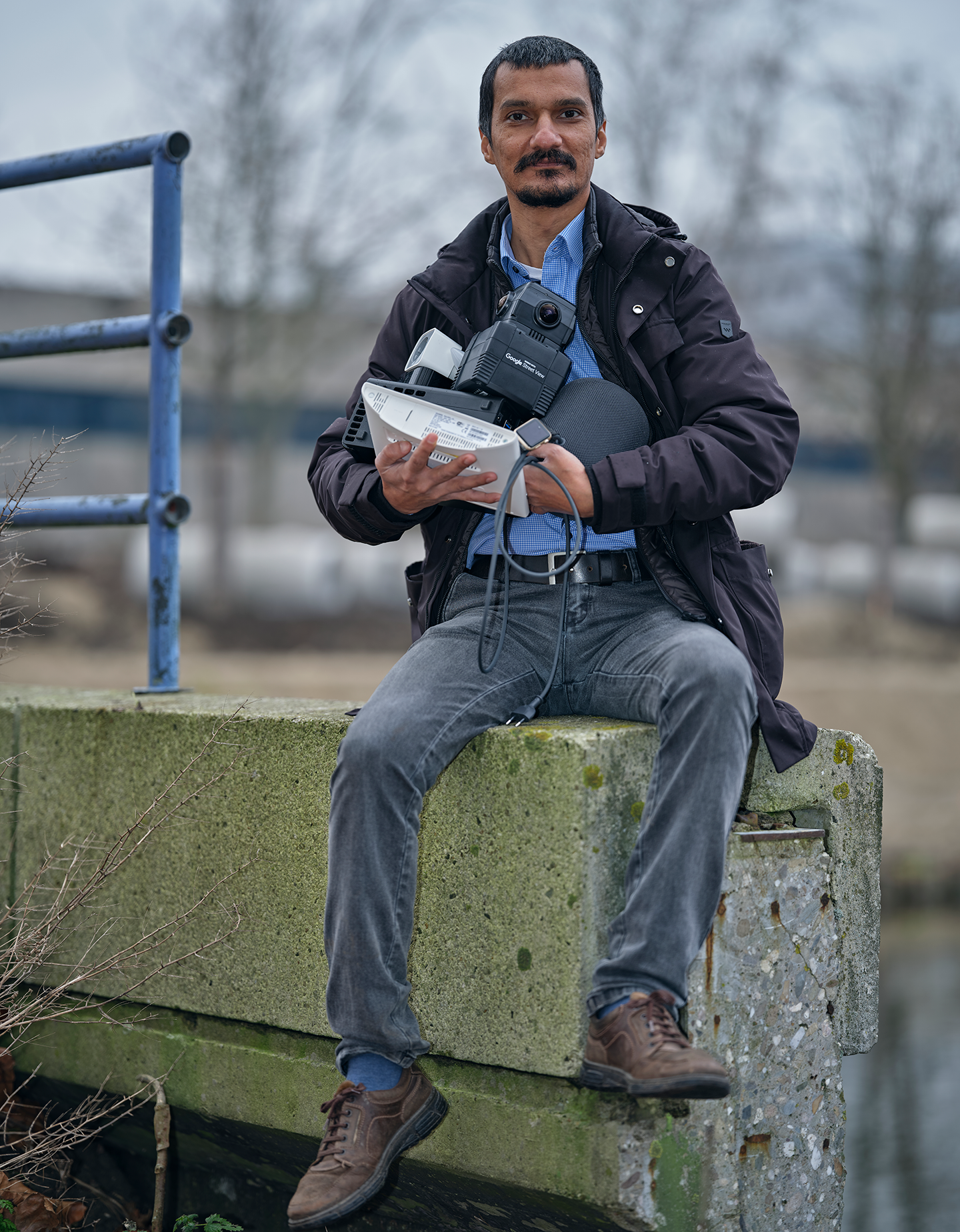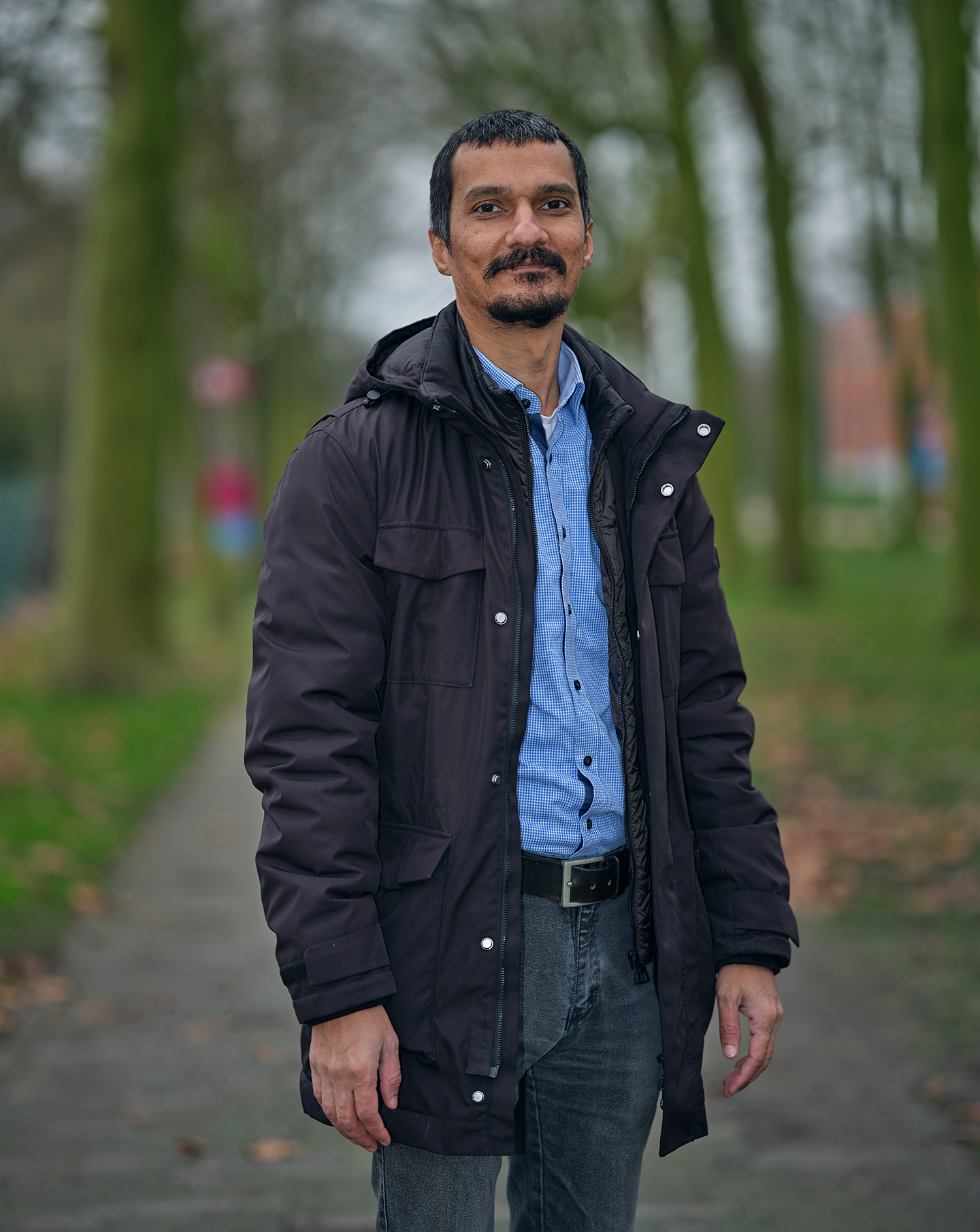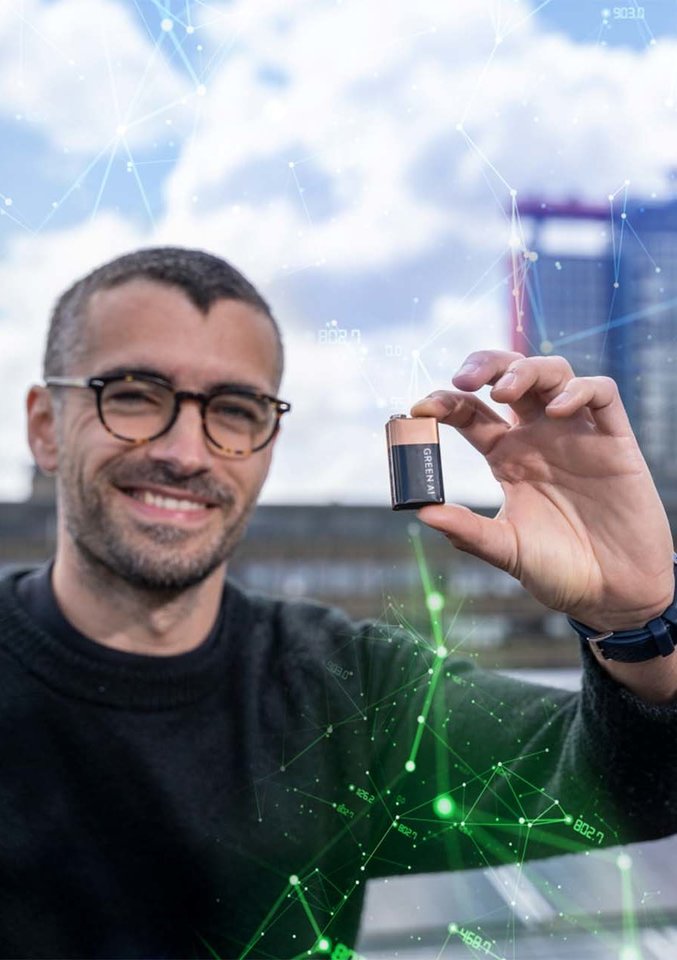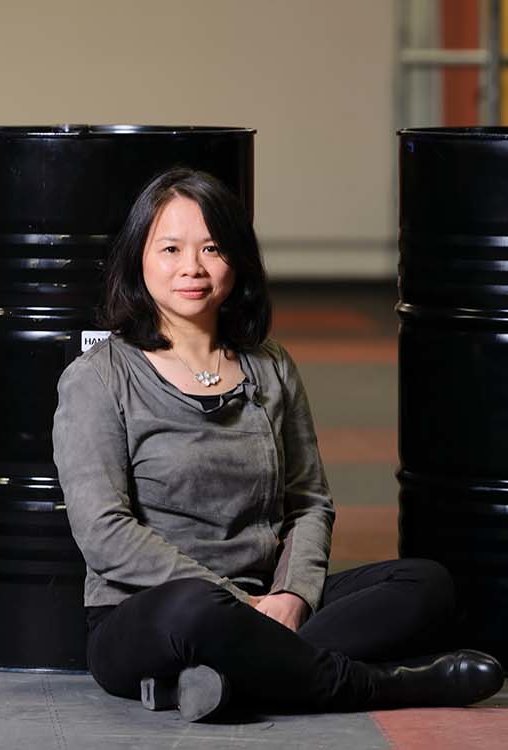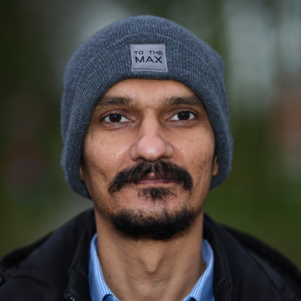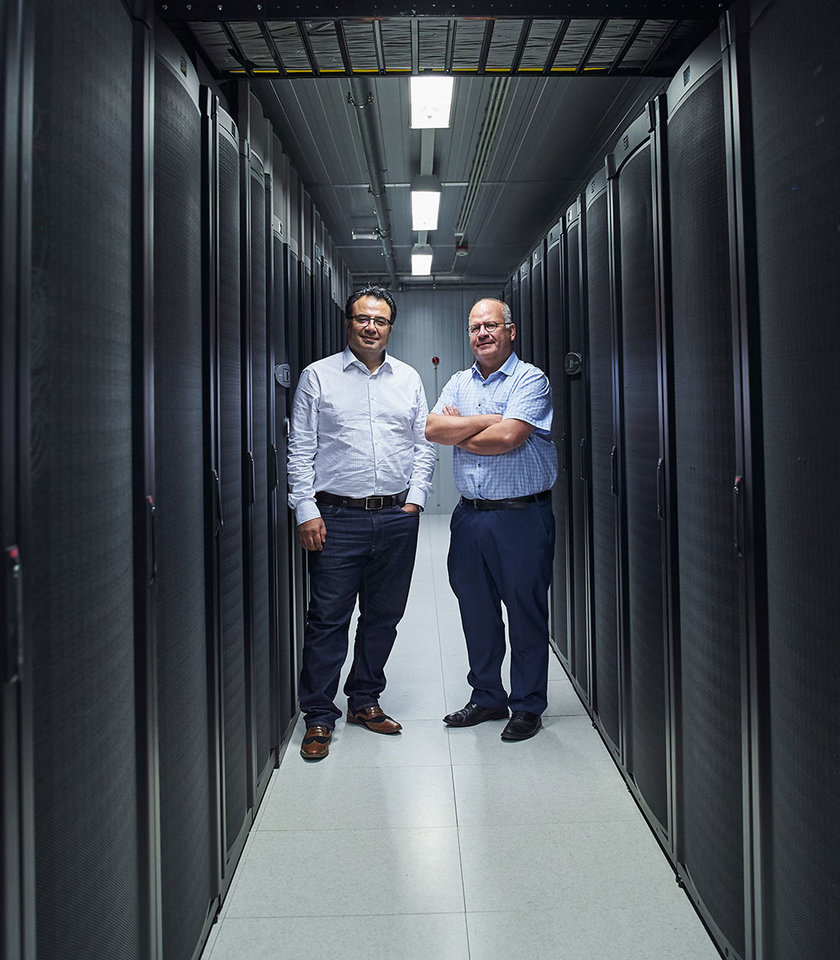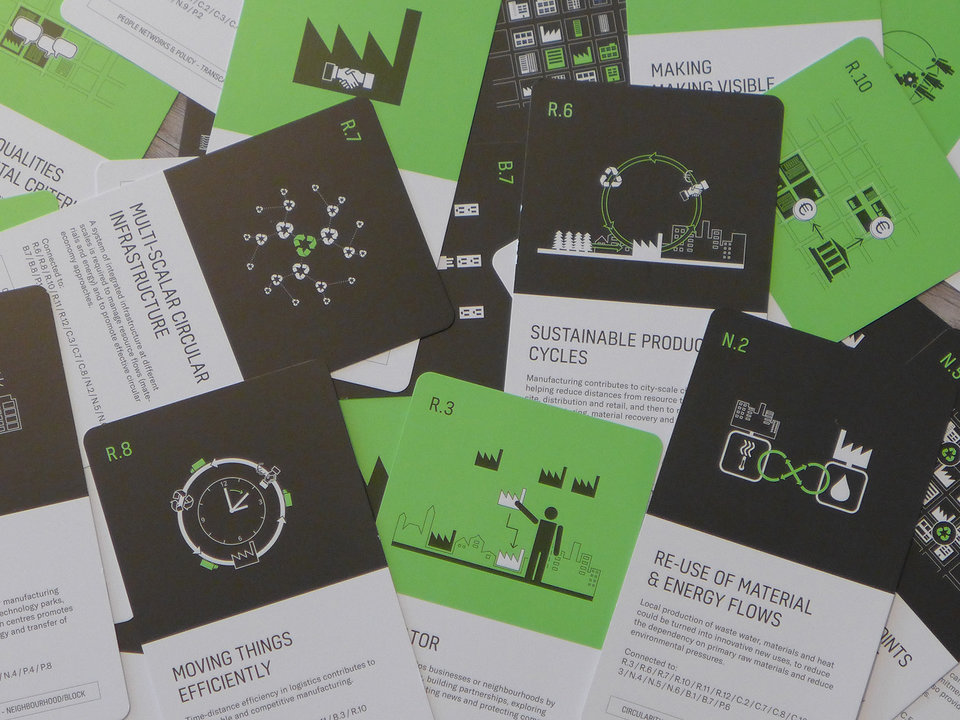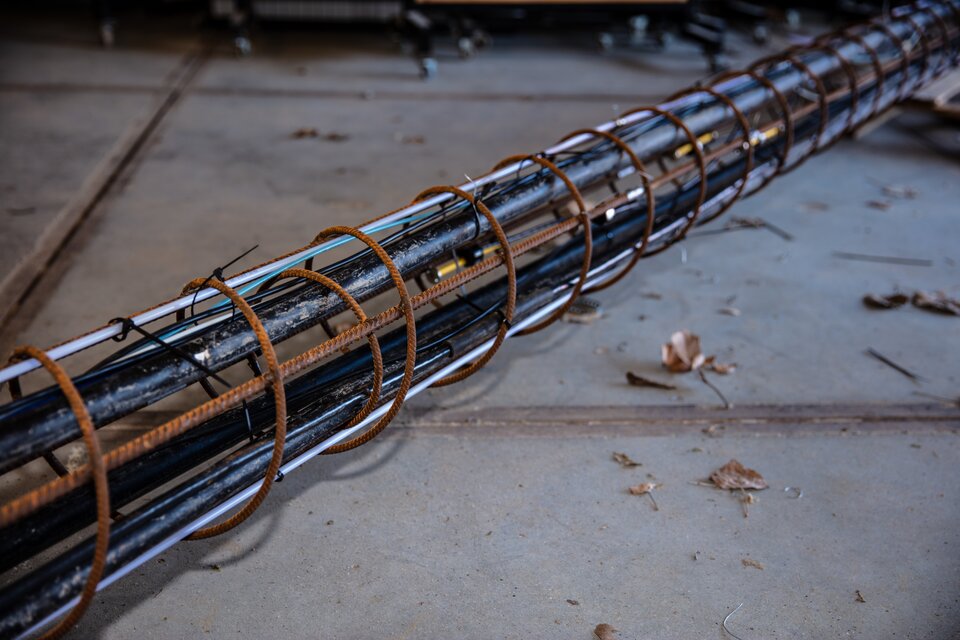Rajendra Bishnoi was already working in semiconductor industry, designing hardware for computer chip memories, when he started wondering ‘What’s next? What’s more interesting, more challenging?’ These questions eventually led him to Delft, where he now works on novel technological concepts for so-called edge devices, and inspires students to follow his example. ‘Conventional computing platforms will start using too much energy soon. We need to look for more energy-efficient alternatives.’
Victorious artificial intelligence
We’re getting smarter and smarter, Bishnoi explains via Zoom. He isn’t talking about us humans, but about computer systems and algorithms. In 2015, in a visual recognition challenge, artificial intelligence (AI) surpassed the intelligence level of a trained human. The next year, the field hit another benchmark when an AI system beat the world champion of the board game Go. However, these advances come at a price, warns Bishnoi. First of all, the victorious AI system used hundreds of central processor units (your iPhone has only half a dozen). It also took a huge amount of energy, equivalent to about a million watt. Bishnoi: ‘I prefer to express it in terms of an electricity bill. Getting the AI to play a single game of Go cost about 300 USD.’ That bill doesn’t even include the data and time it took to train the AI prior to playing.
In a world where we want smart devices everywhere, the energy demands are becoming a serious issue.
From centralised to edge computing
This is the main motivation of Bishnoi: ‘If we continue on the current path, AI will consume too much resources.’ In a world where we want smart devices everywhere, the energy demands are becoming a serious issue. Bishnoi illustrates a possible solution by an example of a smart security camera. ‘To do its job, this camera takes pictures and sends them to a central computer, where they are stored and analysed. Based on this analysis, the central computer could decide to ask the camera to move in order to better see a suspicious activity. The data transfer from camera to central computer and back again takes a lot of time and energy. What if we make the camera just a bit smarter so that it can do its own image analysis?’ This is the field of edge computing, where part of the required intelligence is moved from mega-scale data centres to the edges of the network.
Hitting a fundamental limit
While a step in the direction of energy efficiency, edge computing is challenging us to come up with new ideas about computation. ‘If we want edge computing to be a success, we need to create intelligence that is small enough to fit into the edge device, and that doesn’t require a lot of power.’ And even though our smartphones are wonderful examples of how small and powerful “conventional” microelectronics have become, Bishnoi warns that it is become increasingly difficult to keep making them smaller and more powerful. ‘Progress has been slowing down for the past 15 years. As we’re nearing the scale of single molecules, in terms of the processor speed, we are hitting a fundamental limit.’ A the same time, the power required by computer chips is increasing. ‘We need to look for completely different computer chip architectures and technologies.’
A memory that would normally take six transistors, now only takes a single transistor plus a memristor.
New ways to store data
These “emerging technologies” are a hot topic in computer science. Take, for example, today’s memory chips. They are made of millions of transistors and capacitors, all electronic devices that have been around for almost a hundred years. Bishnoi and colleagues are looking for new ways to store data using so-called memristors, which are tiny electronic components through which small electrical currents flow. ‘These currents depend on the resistivity of the components. As the resistivity can be programmed, a measurement of the current flow works like reading out a memory. This explain the name “memristor”, merging the words memory and resistor. As the wire’s resistance doesn’t need any power to keep its programmed state, it is an energy-efficient system. A memory that would normally take six transistors, now only takes a single transistor plus a memristor. Calculations indicate this could reduce energy usage by a factor of 10 to 1000. Even better, memristors allow us to read multiple – we’re currently working on more than 128 – memory positions in one go, which is impossible when using traditional approaches.’
Wearable heart monitor
Bishnoi dreams of developing emerging technologies that can be used for a wearable device that records the electrical signal of your heart in the form of an electrocardiogram (ECG). While smart-watch-based ECG apps are already available, they rely on the energy-consuming paradigm of sending data over the cloud. ‘We are dreaming of a smart-watch packed with AI that is capable of analysing your ECG without the help of a data centre.’ As each individual user has a different heart rhythm, the AI will have a lot of learning to do. ‘To minimise its power usage, we want it to use a spiked neural network. That’s a type of AI that lies dormant until it detects a certain input, after which it springs into action. Such an approach would be very appropriate for an ECG monitor, which only needs to sound the alarm if the heart rhythm deviates from a healthy one.’
In 50 years’ time, anything that can be automated, will be relying on AI.
Foundations for the future
It’s impossible to predict what types of emerging technologies will eventually make it into production. But, Bishnoi is sure about one thing: ‘In 50 years’ time, anything that can be automated, will be relying on AI. And this AI will surely run on a very different type of computing platform than we are using nowadays.’ The work by Bishnoi and his colleagues is laying the foundations for this future.
Text: Diederik Rep | photography: Frank Auperlé

